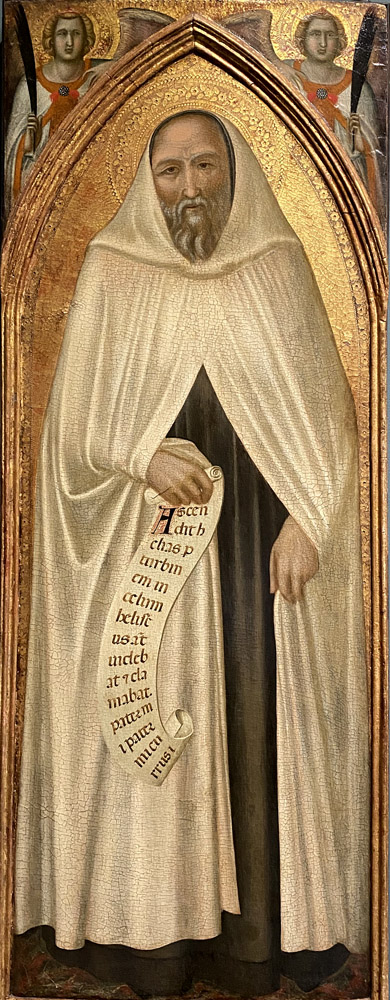
Pietro Lorenzetti
The Prophet Elisha
Siena, circa 1329
Tempera and gold leaf on panel
Norton Simon Museum, Pasadena, California
Provenance: Church of San Niccolò del Carmine
San Niccolò del Carmine was staffed by the Carmelite order, which claimed to have been founded by the prophet Elijah on Mount Carmel.1 When it was time for that prophet to be taken up to Heaven, he chose Elisha as his successor, leaving him the cloak by which he had performed wondrous deeds (2 Kings 2:8-14). Presumably the cloak that is so prominent in the painting refers to the one in the story.
The scroll in Elisha's hand reads, Ascendit helias per turbinem in celum heliseus autem uidebat et clamabat pater mi pater mi currus i[srael, et auriga eius], "Elijah ascended to Heaven in a whirlwind. Elisha saw and cried out, 'My father, my father, I[srael's chariot and charioteer]" (2 Kings 2:12a).
Elisha's subsequent activities are narrated in 2 Kings 3-9. His cure of Naaman of Aram by means of immersion in the River Jordan (II Kings 5) was interpreted by Christians as a
type
Something in the Old Testament that is a symbol of something that will come in the New Testament
of baptism (for example see Glossa Ordinaria, II, 889).
In the Vulgate Elisha's name is rendered Eliseus and Elijah is Elias. In contemporary Bibles the four history books covering Samuel through Jehoiachin are titled 1 and 2 Samuel and 1 and 2 Kings, but in the Vulgate they are 1, 2, 3, and 4 Kings.
View this image in full resolution.
Read more about images of Elisha.
Photographed at the museum by Richard Stracke, shared under Attribution-NonCommercial-ShareAlike license.